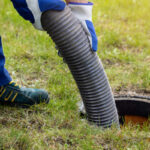Fortunately, there are plenty of resources that can help you study effectively. These official and unofficial materials include studying with a study guide, taking a practice test, reviewing the diagnostic results, and practicing on timed free-response questions. Start with the College Board’s official AP US history course description and overview, which provide helpful content summaries. Then, try some AP exam practice quizzes from the exam makers themselves.
Contents
Studying with a Study Guide
If you’re taking an AP US history course, you should have been preparing for the exam throughout the year and will likely begin your final review a month or two before test day. A solid study plan is essential because the material can be very challenging, and you must retain information over a significant period. One of the most significant advantages of practicing on AP US history study guide questions is that they will help you identify gaps in your knowledge before taking the exam. It’s important to remember that the AP US history exam will measure your understanding of specific historical topics rather than general knowledge of events and dates. It is also crucial to think critically about the information and how it fits together to form an overarching theme. The AP US history exam is divided into three sections. Section I will contain 55 multiple-choice questions based on documents such as written materials, charts, graphs, and cartoons. This exam assesses your ability to formulate and support a thesis with relevant evidence. Section II will consist of a document-based question (DBQ) and a long essay question, or LEQ. Each LEQ is based on a particular historical theme and requires you to analyze the information from various documents. This exam assesses your ability to analyze cause and effect, comparison, continuity, and change.
Taking a Practice Test
Taking a practice test allows students to get familiar with the structure of the exam. It can also help them identify areas of weakness. They can then create a study plan to improve those weak areas. This can also help them develop better time management skills, which will be helpful on test day. There are a variety of official and unofficial practice tests available for students to take. The College Board designs official AP practice tests, including multiple-choice and short-answer questions. Unofficial practice tests can be found online or in popular test prep books. Some websites even allow students to self-create their practice tests by combining questions from textbooks, class notes, and other study materials. Besides practicing with practice tests, students must remember the skills required for the AP US history course and exam. Students should be able to analyze the context of historical events, processes, and developments and identify patterns and connections across periods. They should also be able to use historical reasoning processes like comparison, causation, continuity, and change to explain their thinking. These skills will be crucial in the free response section of the exam, which asks students to respond to a document-based question and a long essay question. The document-based question requires students to cite multiple primary sources, while the extended essay question asks them to write an argumentative essay.
Taking a Diagnostic Test
The AP US history course is challenging, and it’s easy to forget parts of the material if you practice regularly. An excellent way to determine your strengths and weaknesses is by taking a diagnostic test. This will give you a concrete reading of your knowledge level and help you decide on the best study strategy in the future. Fortunately, many free resources exist to aid your AP US history preparations. Several of these are directly from College Board, so they’re the most accurate representations of what you can expect on the exam. Start by taking a diagnostic test that includes both multiple-choice and short-answer questions. In descending order, list the topics for which you scored poorly. This will allow you to focus your study time on the areas that need it most. Once you have mastered the content for which you struggled, you can move on to practicing your skills with timed free-response questions. Another handy resource is the AP US History Learn by Concept tool. It’s a chart of the critical concepts you need to understand for each period of AP US history, and it links to practice questions so you can test your understanding. It’s designed to accompany the Glencoe American History textbook, but it’s valid regardless of which book your class uses.
Reviewing Your Errors
The AP US history exam asks you to connect historical events and documents to the overarching themes covered in your course. You also need to be able to explain how these themes influence one another. You must understand the content and use various study materials to do so. The best resource for these is the College Board website, which has practice questions and other materials that accurately represent what you’ll face on the test. These are especially useful for preparing for the free-response sections, which include a document-based question (DBQ) and an extended essay. To get the most out of these resources, take a full practice test under realistic conditions. Time yourself, write out both essays (DBQ and LEQ) completely, and mark any multiple-choice questions you had to guess on–you’ll need to review these later! It’s also a good idea to make some flashcards. While this may seem like old-school advice, flashcards are a great way to remember important information. In addition to making it easier to recall the key dates and events, a set of flashcards can help you practice your historical reasoning skills–another crucial part of the exam.




